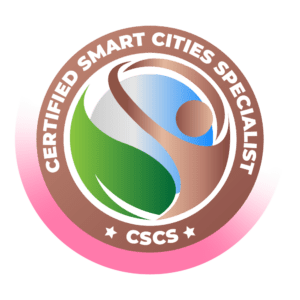About Course
Smart Cities and the Internet of Things
This course will teach you how IOT technologies can help smart cities improve infrastructure and make life easier. I’ll define IOT technology to answer this question. I’ll then discuss IOT technology and how it helps smart cities flourish in design, farming, safety and surveillance, and health and sanitation.
We will forecast how the Internet of Things (IOT) can lessen urban population pressures and challenges in particular areas. We’ll also examine IOT environmental impacts. In the final section,” I recommend long-term frameworks for IOT technology and its faults. This course concludes with the effects of employing IOT technology to improve city infrastructure and overcrowding.
Beyond Smart Cities is the world’s first marketplace for green technology. It connects millions of sustainability experts, green building experts, energy experts, commissioning experts, health and safety experts, fire safety experts, climate change experts, and green product and technology manufacturers with independent talent from all over the world.
Krishnaji Pawar, the CEO and founder of Beyond Smart Cities, is in charge of creating the Smart Cities and the Internet of Things training course.
Specialises in developing sustainable design strategies for Green Building Certification Systems (LEED, GSAS, ACP, ISO 14001:2015, etc.), Energy Management, Energy Efficiency, Energy Audit, Building Commissioning, Environmental Impact Assessment, and Environmental Management Systems.
The training is meant to help people learn more about IoT technologies and how they can be used in smart cities. The program will talk about different parts of the IoT ecosystem, such as basic communication technologies, IoT applications, planning for everywhere connectivity, and how important it is to build a horizontal common service layer for smart city applications.
This will also talk about smart governance and services for citizens, use cases for smart cities, security, privacy, and regulatory issues with IoT-based applications, such as data analytics, and other related topics.
Learning Objectives
- What exactly is meant by the term “Internet of Things” (IoT)?
- Explain the concept of a smart city.
- The Internet of Things and Its Impact on Smart Cities
- Internet of Things Uses in Smart Cities
- The Functional Capabilities of the Internet of Things Produce Smart Cities
- IoT Technological Solutions to Decrease and Ease the Strains Placed on Cities Due to Their Larger Populations
- Implications for Long-Term Sustainability
- Putting Sustainable Frameworks to Use and Identifying IOT Flaws
It can help readers see how sustainability can be improved by using technology, environmental science, engineering, and social science in urban planning and development. With a cross-disciplinary approach, Internet of Things technology can help ease and solve the world’s growing problems.
The Internet of Things (IoT) will be able to connect a large number of different and heterogeneous end systems in a transparent and seamless way. It will also give open access to subsets of data that can be used to build a wide range of digital services. Because of this, it is very hard to make a general architecture for the Internet of Things.
This is mostly because a system like this could have a very large number of devices, link layer technologies, and services. In this course, we focus on a certain kind of Internet of Things system: one that is used in a city. Even though this is still a very broad category, it is defined by its specific application domain.
In fact, urban IoTs are made to help with the Smart City vision, which wants to use the most advanced communication technologies to help the city government and its citizens get better services. So, this online course gives a complete look at the technologies, protocols, and architecture that make an urban IoT possible. The training course will also show and talk about the technical solutions and best practises that will be used in the upcoming smart city initiative.
In reality, the number of open and standardised protocols is far fewer than the variety of design alternatives for IoT systems, which is very large. The supporting technologies, meanwhile, have achieved a degree of maturity that enables for the actual implementation of IoT solutions and services, beginning with field trials that will hopefully help remove the confusion that currently inhibits a broad adoption of the IoT paradigm.
Course Content
Section 1: Introduction and Course Outline
-
09:03
-
L1. Introduction and Course Outline Handout


